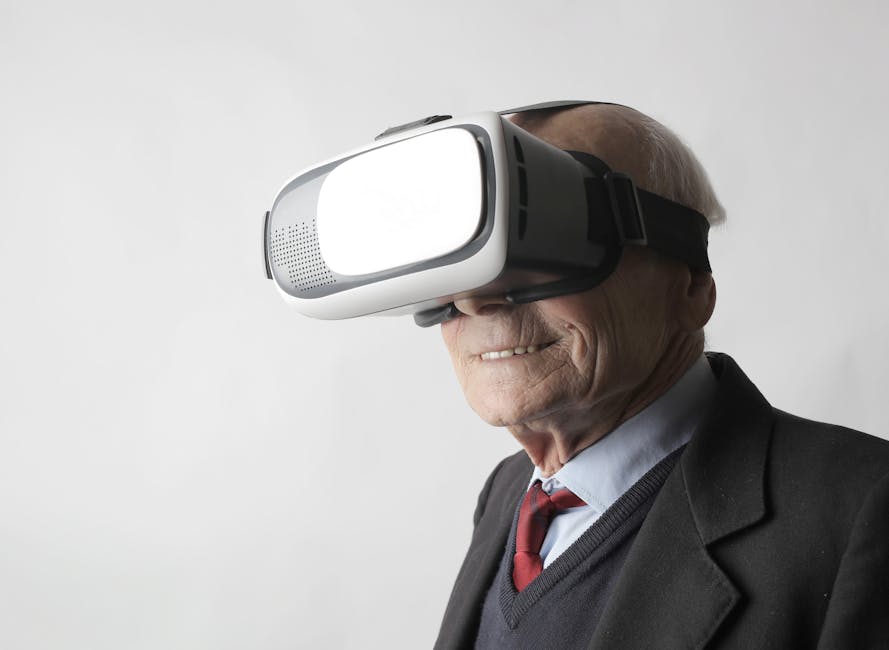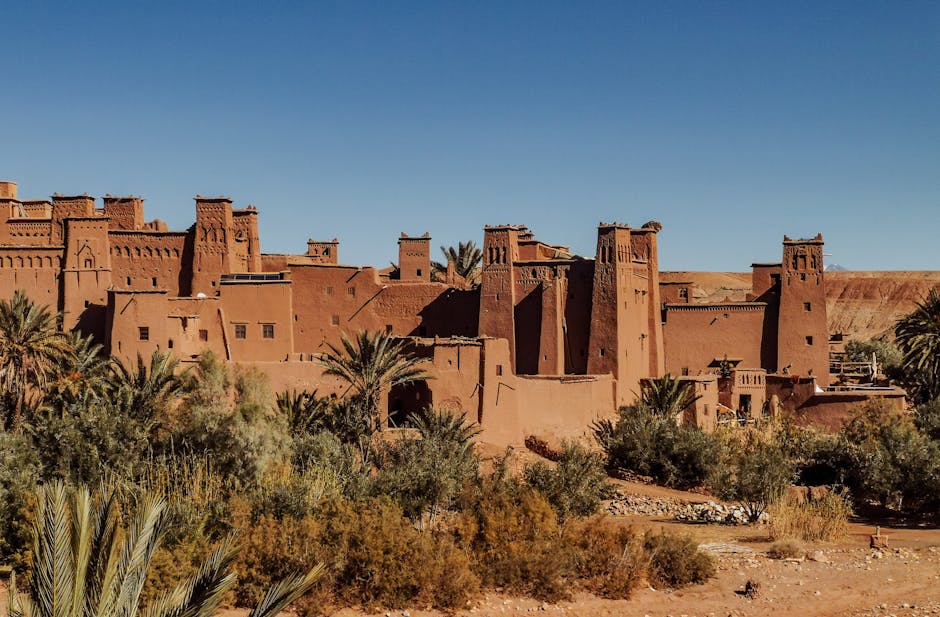The Influence Of Web App Development On Bradford’s Cultural Sector
Step into the vibrant world of Bradford’s cultural sector, where the influence of web app development has revolutionised the way we engage with art, history, and heritage. With just a tap of your finger, you can unlock a treasure trove of accessibility to cultural content like never before.
Explore immersive virtual tours that transport you to captivating exhibitions and galleries, all from the comfort of your own home. Feel the thrill of interactivity as web apps enhance visitor experiences, allowing you to actively participate and shape your own journey through this rich tapestry of culture.
Web app development has not only connected us with a wider audience but has also preserved and digitised our precious cultural heritage for generations to come. Collaborative efforts within the sector have flourished as these innovative technologies foster new ways of working together.
Join us on this exciting exploration as we delve deeper into how web app development is shaping Bradford’s cultural landscape and empowering you with full control over your cultural experience.
Key Takeaways
- Web app development in cultural institutions in Bradford revolutionises the cultural sector by enhancing accessibility to cultural content and breaking down physical barriers for people with mobility issues.
- Web app development in Bradford allows people to explore cultural heritage from home, improves visitor experiences through interactivity, and engages visitors on a deeper level through interactive storytelling.
- Web app development creates virtual environments with immersive technologies like virtual reality and augmented reality, offering dynamic and immersive exploration through virtual tours and exhibitions.
- Web app development in Bradford reaches a wider audience beyond physical limitations with virtual tours, connects with a wider audience through social media integration, and enhances visitor experiences with personalised recommendations.
Enhancing Accessibility to Cultural Content

Web app development is opening up new opportunities for people to easily access and engage with Bradford’s cultural content. With the rise of digital technology, inclusive engagement with cultural experiences has become more accessible than ever before. Web apps provide a platform for individuals of all abilities to immerse themselves in the diverse cultural offerings of Bradford.
One key way that web app development enhances accessibility is through its ability to cater to different learning styles and preferences. By offering a variety of multimedia options such as videos, audio guides, and interactive maps, web apps allow users to personalise their cultural immersion experience. Whether someone prefers visual or auditory information, they can engage with the content in a way that suits them best.
Furthermore, web apps promote inclusivity by breaking down physical barriers. People who may not have been able to visit museums or attend events due to mobility issues can now explore Bradford’s rich cultural heritage from the comfort of their own homes. Additionally, those who live far away or have limited transportation options can still participate in the city’s vibrant arts scene through virtual exhibitions and performances.
Web app development has revolutionised how people engage with Bradford’s cultural sector by providing inclusive opportunities for immersive experiences. Through personalised multimedia options and the removal of physical barriers, individuals are empowered to take control over their own cultural journeys.
This increased accessibility sets the stage for further improvements in visitor experiences through interactivity and innovative technologies.
Improving Visitor Experiences through Interactivity

Transforming the visitor experience with interactive features is like adding a sprinkle of magic to Bradford’s cultural scene. Through the use of interactive storytelling and immersive technologies, visitors aren’t passive observers but active participants in their cultural exploration. These interactive features engage the audience on a deeper level, allowing them to fully immerse themselves in the cultural content.
Interactive storytelling is at the forefront of this transformation. By incorporating elements like touchscreens, motion sensors, and augmented reality, visitors can interact with exhibits in ways they couldn’t before. They can delve into historical narratives, explore different perspectives, and even contribute their own stories to the mix. This interactivity not only enhances understanding but also fosters a sense of ownership and connexion to Bradford’s cultural heritage.
Immersive technologies further elevate the visitor experience by creating virtual environments that transport individuals to different times and places. Virtual reality headsets let users step into an artist’s studio or walk through ancient ruins without leaving the museum walls. Augmented reality overlays digital content onto real-world objects, bringing artefacts to life with additional information or animated displays. These technologies provide a level of engagement that traditional static displays simply can’t match.
By incorporating these interactive features into Bradford’s cultural sector, accessibility is expanded beyond physical limitations. Visitors have control over their exploration, choosing what they want to see and how they want to interact with it. This personalised approach ensures that each individual can have a unique experience tailored to their interests.
Facilitating virtual tours and exhibitions bridges the gap between physical presence and remote access, providing opportunities for those unable to visit in person due to various constraints. This allows for an even wider audience reach while maintaining a high level of engagement.
As we move forward into facilitating virtual tours and exhibitions…
Facilitating Virtual Tours and Exhibitions

Enhancing the visitor experience through virtual tours and exhibitions creates a dynamic and immersive exploration of cultural heritage. Virtual reality experiences have revolutionised the way people engage with art, history, and culture. By using cutting-edge technology, visitors can now step into a virtual world where they become active participants in the narrative.
Immersive storytelling is at the heart of these virtual experiences. Through carefully crafted narratives, visitors are transported to different time periods or locations, allowing them to fully immerse themselves in the cultural context. Whether it’s exploring ancient ruins or walking through a bustling market in Bradford’s past, virtual tours provide an interactive and educational experience that traditional exhibits cannot replicate.
One of the main advantages of virtual tours and exhibitions is that they offer visitors complete control over their exploration. They can navigate through different areas at their own pace, zooming in on specific details or taking a step back for a broader view. This level of control allows individuals to tailor their experience to their interests and preferences.
Virtual reality experiences also open up possibilities for connecting with a wider audience beyond physical limitations. People from all over the world can now access cultural attractions without having to travel long distances or deal with logistical constraints. This not only increases accessibility but also promotes inclusivity by reaching audiences who may otherwise be unable to visit in person.
By facilitating virtual tours and exhibitions, web app development has transformed how visitors engage with Bradford’s cultural sector. The combination of immersive storytelling and user control creates an enriching experience that appeals to a wide range of individuals. In order to further expand reach and impact, connecting with a wider audience becomes crucial for sustaining growth and promoting cultural exchange without boundaries.
Connecting with a Wider Audience

Expanding reach and promoting cultural exchange without boundaries, connecting with a wider audience has become crucial in sustaining growth. In the digital age, web app development plays a pivotal role in achieving this goal by providing opportunities for enhanced digital engagement and establishing a strong online presence.
Here are five ways web app development facilitates connecting with a wider audience:
-
Interactive Features: Web apps allow users to actively engage with cultural content through interactive features such as quizzes, games, and virtual reality experiences. These immersive elements attract a wider audience by offering an engaging and memorable experience.
-
Social Media Integration: With the integration of social media platforms like Facebook, Twitter, and Instagram, web apps enable users to easily share their experiences with friends and followers. This not only increases exposure but also encourages viral promotion of cultural events or exhibitions.
-
Multilingual Support: Web apps can be designed with multilingual support to cater to diverse audiences. By offering content in multiple languages, cultural institutions can effectively connect with people from different backgrounds and expand their reach globally.
-
Personalised Recommendations: Through data analysis and machine learning algorithms, web apps can provide personalised recommendations based on user preferences. This helps visitors discover relevant cultural events or exhibits that aline with their interests, enhancing their overall experience.
-
Remote Access: Web apps break geographical barriers by allowing users to access cultural content remotely. This enables individuals who are unable to physically visit museums or galleries to still engage with the cultural sector from anywhere in the world.
By leveraging these digital tools and strategies offered by web app development, cultural institutions in Bradford can effectively connect with a wider audience while fostering greater inclusivity. As we transition into discussing the next section on preserving and digitising cultural heritage, it’s evident that web app development serves as an essential step towards ensuring accessibility for all.
Preserving and Digitising Cultural Heritage

Preserving and digitising cultural heritage is like capturing a moment in time, freezing it forever for future generations to explore and experience. In the digital age, the ability to digitise artefacts from Bradford’s cultural sector has provided an invaluable tool for cultural preservation. By converting physical objects into digital formats, these artefacts can be easily stored, accessed, and shared with a wider audience.
Digitising artefacts allows for their preservation in a way that physical copies cannot guaranty. Physical objects are susceptible to damage, deterioration, or loss over time. However, by creating digital replicas of these items, they can be safeguarded against such risks. This ensures that even if the original artefact is destroyed or lost, its essence and historical significance will continue to exist digitally.
Furthermore, digitisation enables easier access to cultural heritage. People from all around the world can now explore Bradford’s cultural sector without needing to physically visit museums or archives. Digital platforms provide an opportunity for individuals who may not have had the means or opportunity to engage with these artefacts before.
Cultural preservation through digitisation also opens up possibilities for collaboration within the sector. Different organisations can come together virtually to share resources and knowledge about preserving and digitising their collections. This fosters co-operation and innovation in finding new ways to protect and showcase Bradford’s rich cultural heritage.
As we move forward into fostering collaboration within the cultural sector, it’s essential to recognise how preserving and digitising our cultural heritage has revolutionised accessibility and preservation efforts. Through this process of capturing moments in time digitally, we ensure that future generations can delve into Bradford’s history while also fostering connexions within our vibrant community of artists and historians alike.
Fostering Collaboration within the Cultural Sector

Now that we’ve explored the importance of preserving and digitising cultural heritage, let’s delve into the current subtopic: fostering collaboration within Bradford’s cultural sector.
By promoting community engagement and encouraging innovation, web app development has played a pivotal role in bringing together various stakeholders in the cultural sector to work towards a common goal.
One way in which web app development promotes collaboration is by providing a platform for cultural organisations, artists, and enthusiasts to connect and share ideas. Through online forums, chat rooms, and social media platforms dedicated to the arts, individuals can engage in discussions, seek advice, and collaborate on projects. This digital space allows for a diverse range of voices to be heard and fosters an environment of inclusivity.
Furthermore, web apps provide tools for collaborative work on creative projects. Artists can collaborate remotely through shared virtual spaces where they can collectively edit documents or create artworks. This not only facilitates collaboration between individuals who may be geographically distant but also encourages innovative approaches to artistic expression.
In addition to facilitating collaboration amongst professionals in the cultural sector, web app development also enables community engagement. Cultural organisations can use web apps to crowdsource ideas from their audience or invite them to participate in virtual events such as workshops or exhibitions. By involving the community directly in decision-making processes or creative endeavours, these organisations foster a sense of ownership and belonging amongst their audience.
Overall, web app development has revolutionised how collaboration occurs within Bradford’s cultural sector by promoting community engagement and encouraging innovation. Through online platforms and collaborative tools, individuals from diverse backgrounds can come together to create meaningful cultural experiences that reflect the vibrant spirit of Bradford.
Contact us to discuss our services now!
